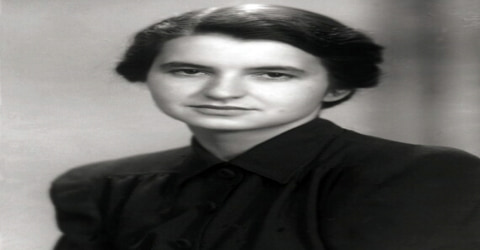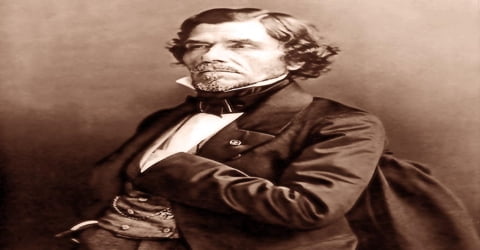Biography of Rosalind Franklin
Rosalind Franklin – English Chemist and X-ray Crystallographer.
Name: Rosalind Elsie Franklin
Date of Birth: 25 July 1920
Place of Birth: Notting Hill, London, England, UK
Date of Death: 16 April 1958 (aged 37)
Place of Death: Chelsea, London, England, UK
Cause of death: Ovarian cancer
Father: Ellis Arthur Franklin
Mother: Muriel Frances Waley
Siblings: Colin Franklin, David Franklin, Jenifer Glynn, Roland Franklin
Religion: Agnosticism
Fields: Physical chemistry, X-ray crystallography
Early Life

Rosalind Elsie Franklin was born on July 25, 1920, into a socially well-connected, upper-class family in the United Kingdom’s capital city, London. Her father was Ellis Arthur Franklin, an investment banker; and her mother was Muriel Frances Waley, daughter of a lawyer. Rosalind was the second of their five children.
British chemist Rosalind Franklin is best known for her role in the discovery of the structure of DNA, and for her pioneering use of X-ray diffraction. Although her works on coal and viruses were appreciated in her lifetime, her contributions to the discovery of the structure of DNA were largely recognized posthumously.
Born to a prominent British Jewish family, Franklin was educated at a private day school at Norland Place in West London, Lindores School for Young Ladies in Sussex, and St Paul’s Girls’ School, London. Then she studied the Natural Sciences Tripos at Newnham College, Cambridge, from which she graduated in 1941. Earning a research fellowship, she joined the University of Cambridge physical chemistry laboratory under Ronald George Wreyford Norrish, who disappointed her for his lack of enthusiasm. The British Coal Utilisation Research Association (BCURA) offered her a research position in 1942 and started her work on coals. This helped her earn a Ph.D. in 1945.
In 1942, in the middle of World War 2, Franklin began working in coal utilization research in London. Coal – an impure form of carbon – was absolutely vital for fueling the British war effort.
Like a sponge, coal is porous, with networks of tiny tunnels running through it. The properties of these tunnels are important to coal’s efficiency as a fuel. Franklin was able to classify coals by their porosity and relate this accurately to their performance as fuels.
Working with Maurice Wilkins and a doctorate student Raymond Gosling, she was able to correctly assess the structure of DNA. Her theory that DNA consists of two helical structures were later confirmed by scientists James Watson and Francis Crick. She also played an important role in deciphering the RNA structure.
Franklin is best known for her work on the X-ray diffraction images of DNA, particularly Photo 51, while at King’s College London, which led to the discovery of the DNA double helix for which James Watson, Francis Crick, and Maurice Wilkins shared the Nobel Prize in Physiology or Medicine in 1962. Watson suggested that Franklin would have ideally been awarded a Nobel Prize in Chemistry, along with Wilkins, but, although there was not yet a rule against posthumous awards, the Nobel Committee generally does not make posthumous nominations.
After finishing her work on DNA, Franklin led pioneering work at Birkbeck on the molecular structures of viruses. Her team member Aaron Klug continued her research, winning the Nobel Prize in Chemistry in 1982.
She studied the porosity of coal using helium to determine its density. Through this, she discovered the relationship between the fine constrictions in the pores of coals and the permeability of the porous space. By concluding that substances were expelled in order of molecular size as temperature increased, she helped classify coals and accurately predict their performance for fuel purposes and for production of wartime devices such as gas masks. This work was the basis of her Ph.D. thesis The physical chemistry of solid organic colloids with special reference to coal for which the University of Cambridge awarded her a Ph.D. in 1945. It was also the basis of several papers.
Childhood, Family and Educational Life
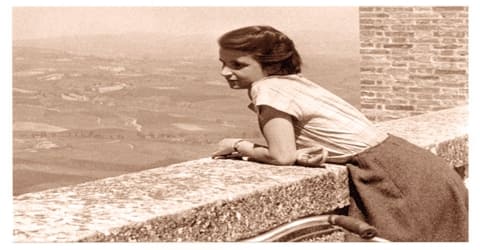
Rosalind Elsie Franklin was born on 25 July 1920 in 50 Chepstow Villas, Notting Hill, London, into an affluent and influential British Jewish family. Her father was Ellis Arthur Franklin (1894–1964), a politically liberal London merchant banker who taught at the city’s Working Men’s College, and her mother was Muriel Frances Waley (1894–1976). Rosalind was the elder daughter and the second child in the family of five children. David (born 1919) was the eldest brother; Colin (born 1923), Roland (born 1926), and Jenifer (born 1929) were her younger siblings.
In addition to his banking work, Rosalind’s father helped less privileged people by teaching electricity and magnetism at London’s Working Men’s College. Her mother did charitable work helping the elderly, the unemployed and unmarried mothers.
Franklin displayed exceptional intelligence from early childhood, knowing from the age of 15 that she wanted to be a scientist. She received her education at several schools, including North London Collegiate School, where she excelled in science, among other things. She completed her studies from schools in West London, Sussex and Brook Green. She also learned German and became fluent in French, a language she would later find useful. She topped her classes and won annual awards. Her only educational weakness was in music, for which the school music director, the composer Gustav Holst, once called upon her mother to inquire whether she might have suffered from hearing problem or tonsillitis. A bright student, she earned distinctions in six subjects in her matriculation examinations in 1938 and even received a scholarship for higher studies (the School Leaving Exhibition of £30 a year for three years, and £5 from her grandfather).
Rosalind left school in 1938, by which time there was a growing acceptance in the UK that a war with Nazi Germany was likely. Rosalind’s Jewish parents had taken two children fleeing from the Nazi regime into their home. When Rosalind won a university scholarship, she donated it to a refugee student.
Before beginning university, she abandoned any spiritual adherence to Judaism, but not her cultural affinity.
Rosalind then enrolled at the ‘Newnham College’ of ‘Cambridge University’ for her higher studies. Arriving at the University of Cambridge in 1938, age 18, Franklin opted to study Natural Sciences. She worked hard, and participated fully in the university’s societies, joining the Chemistry Club, the Mathematics Club, and the Jewish Society. She completed her bachelor’s degree in 1941 under the tutelage of teachers like W. C. Price.
She went on to work as an assistant research officer at the British Coal Utilisation Research Association, where she studied the porosity of coal—work that was the basis of her 1945 Ph.D. thesis “The physical chemistry of solid organic colloids with special reference to coal.”
Personal Life
Her closest personal affair was probably with her once post-doctoral student Donald Caspar. In 1956, she visited him at his home in Colorado after her tour to University of California, Berkeley, and she was known to remark later that Caspar was one “she might have loved, might have married”. In her letter to Sayre, she described him as “an ideal match”.
This famous scientist was fond of outdoor activities like trekking and traveling places.
Career and Works
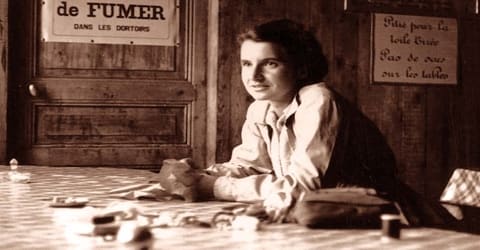
Franklin went to Newnham College, Cambridge in 1938 and studied chemistry within the Natural Sciences Tripos. There she met the spectroscopist Bill Price, who worked with her as a laboratory demonstrator and who later became one of her senior colleagues at King’s College London. In 1941, she was awarded second-class honors from her final exams. The distinction was accepted as a bachelor’s degree in qualifications for employment. Cambridge began awarding titular B.A. and M.A. degrees to women from 1947, and the previous women graduates retroactively received these. In her last year at Cambridge, she met a French refugee Adrienne Weill, a former student of Marie Curie, who had a huge influence on her life and career and helped her to improve her spoken French.
Rosalind embarked on her scientific career at the ‘University of Cambridge’ availing a research fellowship to work in the laboratory of chemist Ronald Norrish. But Ronald who was by then addicted to alcoholism turned out to be a poor mentor and eventually Franklin quit her job.
In 1942, she took up a position as the Assistant Research Officer in the office of ‘British Coal Utilisation Research Association’. During her BCURA research, she stayed at Adrienne Weill’s boarding house in Cambridge until her cousin Irene Franklin asked to join her in a vacated house of her uncle in Putney. With Irene, she volunteered as an Air Raid Warden and regularly made patrols to see the welfare of people during air raids.
Her studies on the porosity of coal led to the classification of coal and their optimum utilization for developing war weaponry and her dissertation ‘The physical chemistry of solid organic colloids with special reference to coal’ was based on her research. The ‘Cambridge University’ presented her a doctoral degree in the year 1945.
In the fall of 1946, Franklin was appointed at the Laboratoire Central des Services Chimiques de l’Etat in Paris, where she worked with crystallographer Jacques Mering. He taught her X-ray diffraction, which would play an important role in her research that led to the discovery of “the secret of life”—the structure of DNA. In addition, Franklin pioneered the use of X-rays to create images of crystalized solids in analyzing complex, unorganized matter, not just single crystals.
After the war, she traveled to Paris and took up a position at the ‘Laboratoire Central des Services Chimiques de l’Etat’ in the city, in 1947. The fifteen-member research team was led by the French engineer Jacques Mering.
Franklin, working with Gosling, started to apply her expertise in X-ray diffraction techniques to the structure of DNA. She used a new fine-focus X-ray tube and microcamera ordered by Wilkins, but which she refined, adjusted and focused carefully. Drawing upon her physical chemistry background, she also skillfully manipulated the critical hydration of her specimens. When Wilkins inquired about this improved technique, she replied in terms which offended Wilkins as Franklin had “an air of cool superiority”.
In 1949, Franklin began thinking about returning to her home city. Her feelings about this were ambiguous; she enjoyed the company of French people more than English people.
Returning to England in 1950, she obtained a fellowship to work at the King’s College in London. She then utilized her skills in x-ray crystallography when the ‘Medical Research Council’ of England appointed her as a research associate.
Franklin presented her data at a lecture in November 1951, in King’s College London. In her lecture notes, Franklin wrote the following:
“The results suggest a helical structure (which must be very closely packed) containing 2, 3 or 4 co‐axial nucleic acid chains per helical unit, and having the phosphate groups near the outside.”
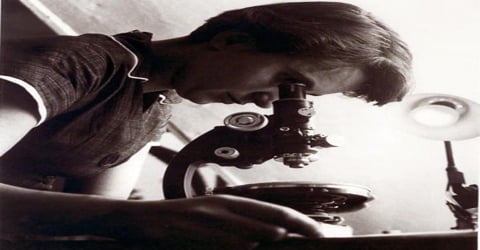
The trio discovered two forms of the DNA which were name DNA ‘A’ and DNA ‘B’, while DNA ‘A’ was a short and fat structure and was data-rich, DNA ‘B’ was a long slender structure, generally seen in high humidity conditions.
By 1951, they had successfully deduced that the DNA ‘B’ was helical in structure but discrepancies in some of the images led to further research in the matter.
In July 1952, as a practical joke on Wilkins (who frequently expressed his view that both forms of DNA were helical), Franklin and Gosling produced a funeral notice regretting the ‘death’ of helical crystalline DNA (A-DNA). During 1952, they worked at applying the Patterson function to the X-ray pictures of DNA they had produced. This was a long and labor-intensive approach but would yield significant insight into the structure of the molecule.
By January 1953, Franklin had reconciled her conflicting data, concluding that both DNA forms had two helices, and had started to write a series of three draft manuscripts, two of which included a double helical DNA backbone (see below). Her two A-DNA manuscripts reached Acta Crystallographica in Copenhagen on 6 March 1953, one day before Crick and Watson had completed their model on B-DNA. She must have mailed them while the Cambridge team was building their model, and certainly had written them before she knew of their work. On 8 July 1953, she modified one of these “in proof” Acta articles, “in light of recent work” by the King’s and Cambridge research teams.
The third draft paper was on the B form of DNA, dated 17 March 1953, which was discovered years later amongst her papers, by Franklin’s Birkbeck colleague, Aaron Klug. He then published an evaluation of the draft’s close correlation with the third of the original trio of 25 April 1953 Nature DNA articles. Klug designed this paper to complement the first article he had written defending Franklin’s significant contribution to DNA structure. He had written this first article in response to the incomplete picture of Franklin’s work depicted in Watson’s 1968 memoir, The Double Helix.
Franklin left King’s College in March 1953 and relocated to Birkbeck College, where she studied the structure of the tobacco mosaic virus and the structure of RNA. Because Randall let Franklin leave on the condition that she would not work on DNA, she turned her attention back to studies of coal. In five years, Franklin published 17 papers on viruses, and her group laid the foundations for structural virology.
Her team at Birbeck consisted of her students Kenneth Holmes, Donald Caspar, and her research assistant James Watt. While Kenneth worked on exploring the entire structure of RNA, Caspar was determined to pinpoint the exact location of RNA on the tobacco mosaic virus.
They made a breakthrough discovery in this regard in 1956 and in the March issue of the journal ‘Nature’ they presented a paper that outlined the position and structure of RNA in tobacco mosaic virus.
The ‘Brussels World’s Fair’ or the ‘Expo 58’ as it is popularly known as the first World’s Fair organized after WWII, in 1958, and Franklin exhibited a display modeled on the tobacco mosaic virus which was five foot high and made using ping pong balls and bicycle handlebar grips.

Death and Legacy
In 1956, she was diagnosed with abdominal cancer and she underwent treatment. She continued working throughout the following two years, despite having three operations and experimental chemotherapy. She experienced a 10-month remission and worked up until several weeks before her death on April 16, 1958, at the age of 37.
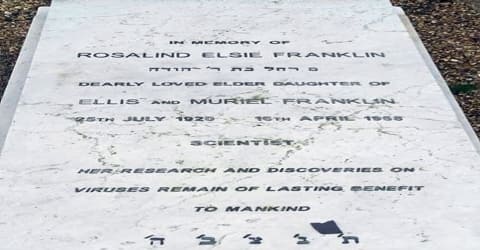
Other members of her family have died of cancer, and the incidence of gynecological cancer is known to be disproportionately high among Ashkenazi Jews. Her death certificate states: A Research Scientist, Spinster, Daughter of Ellis Arthur Franklin, a Banker.
The inscription on her tombstone reads:
IN MEMORY OF
ROSALIND ELSIE FRANKLIN
מ’ רחל בת ר’ יהודה (Rochel/Rachel daughter of Yehuda, her Hebrew name)
DEARLY LOVED ELDER DAUGHTER OF
ELLIS AND MURIEL FRANKLIN
25TH JULY 1920 – 16TH APRIL 1958
SCIENTIST
HER RESEARCH AND DISCOVERIES ON
VIRUSES REMAIN OF LASTING BENEFIT
TO MANKIND
ת נ צ ב ה (Hebrew initials for “her soul shall be bound in the bundle of life”)
Franklin’s letter to her parents in January 1939 is often taken as reflecting her own prejudiced attitude and that she was “not immune to the sexism rampant in these circles.” In it, she remarked one lecturer as “very good, though female.” But as Maddox explains, it was more of circumstantial comment rather than a gender bias. It was more of an admiration because at the time woman teachers of science were a rarity. She, in fact, laughed at men who were embarrassed by the appointment of the first female professor Dorothy Garrod.
Franklin was never nominated for a Nobel Prize. Her work was a crucial part in the discovery of DNA’s structure, which along with subsequent related work led to Francis Crick, James Watson, and Maurice Wilkins were awarded a Nobel Prize in 1962.
Information Source:
